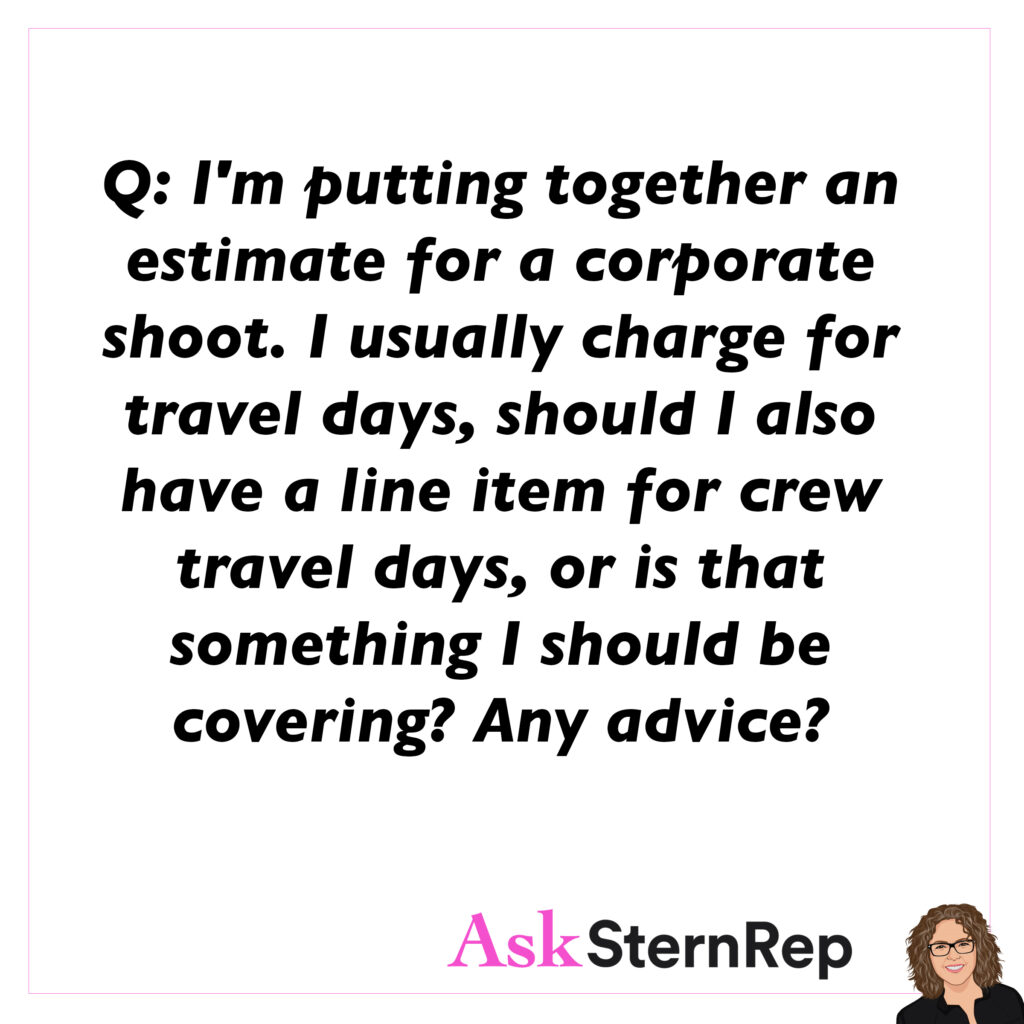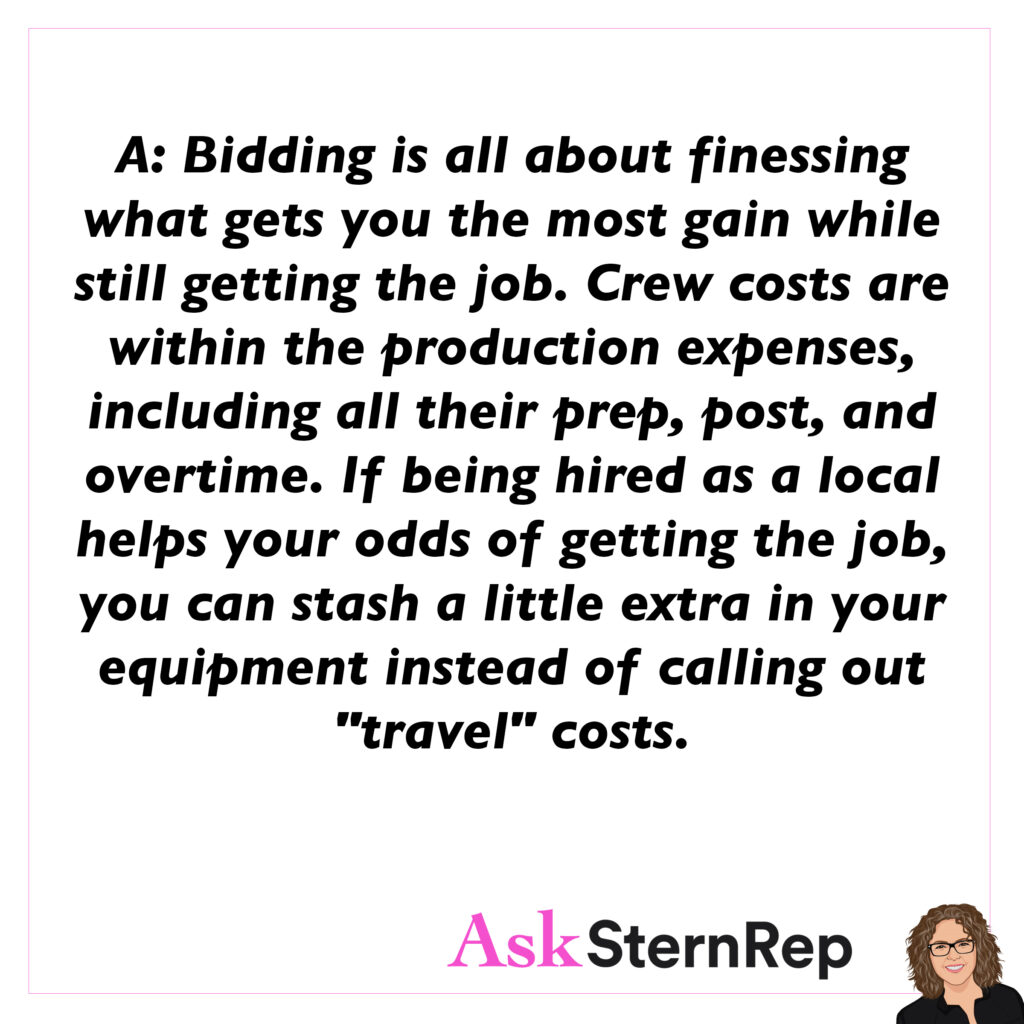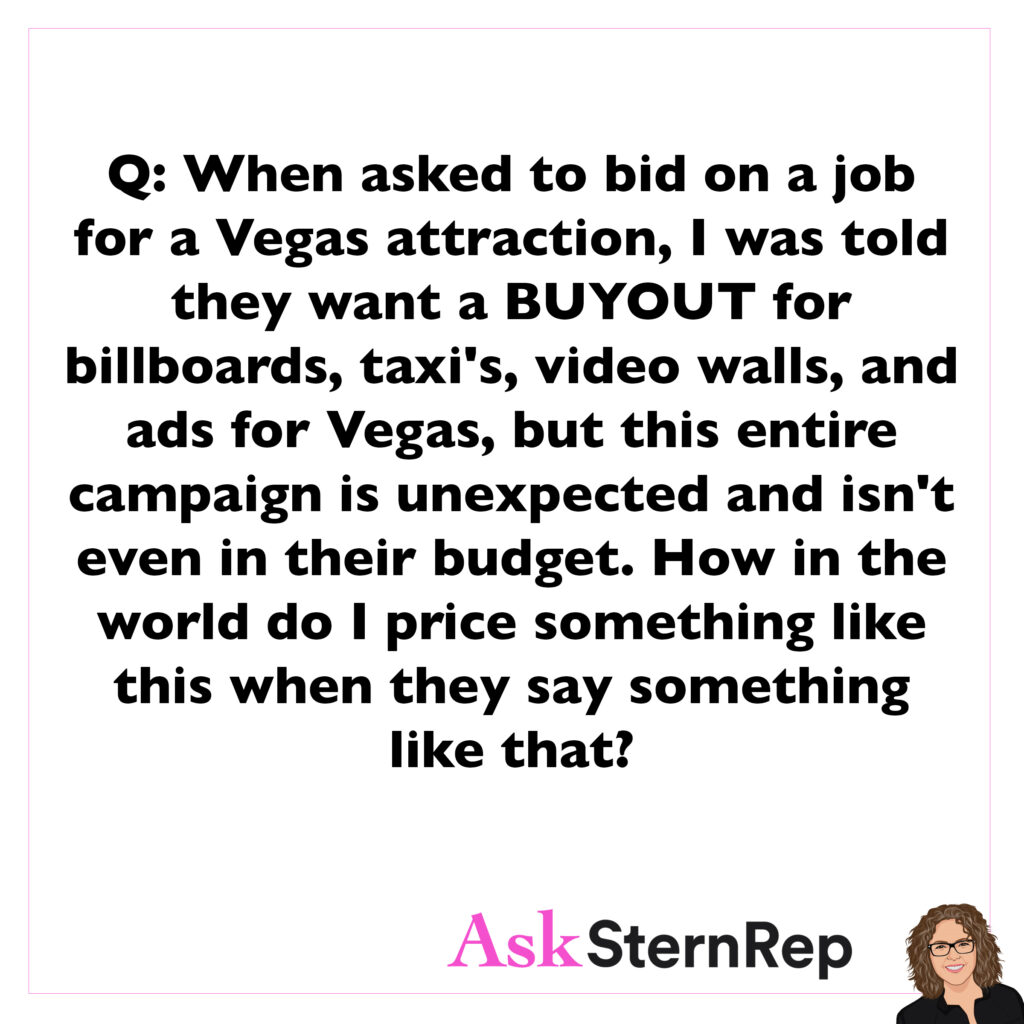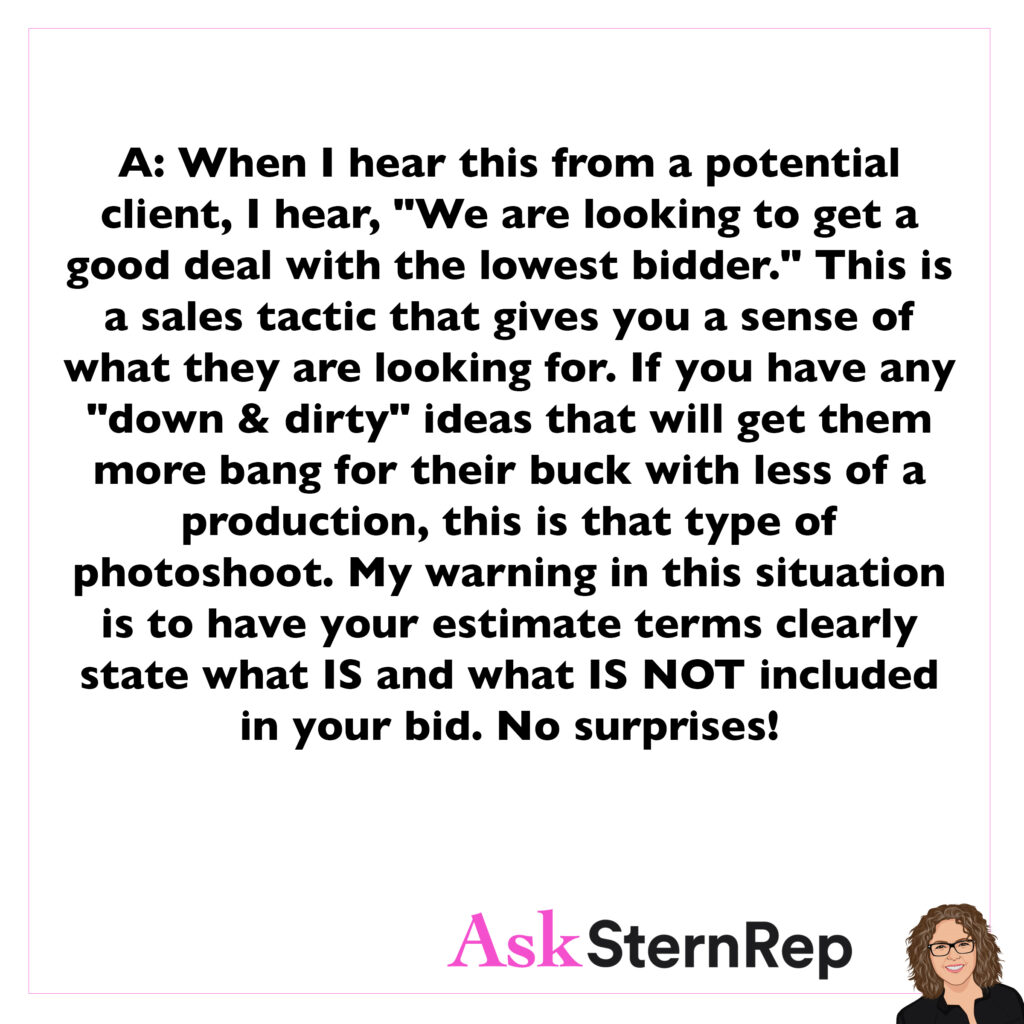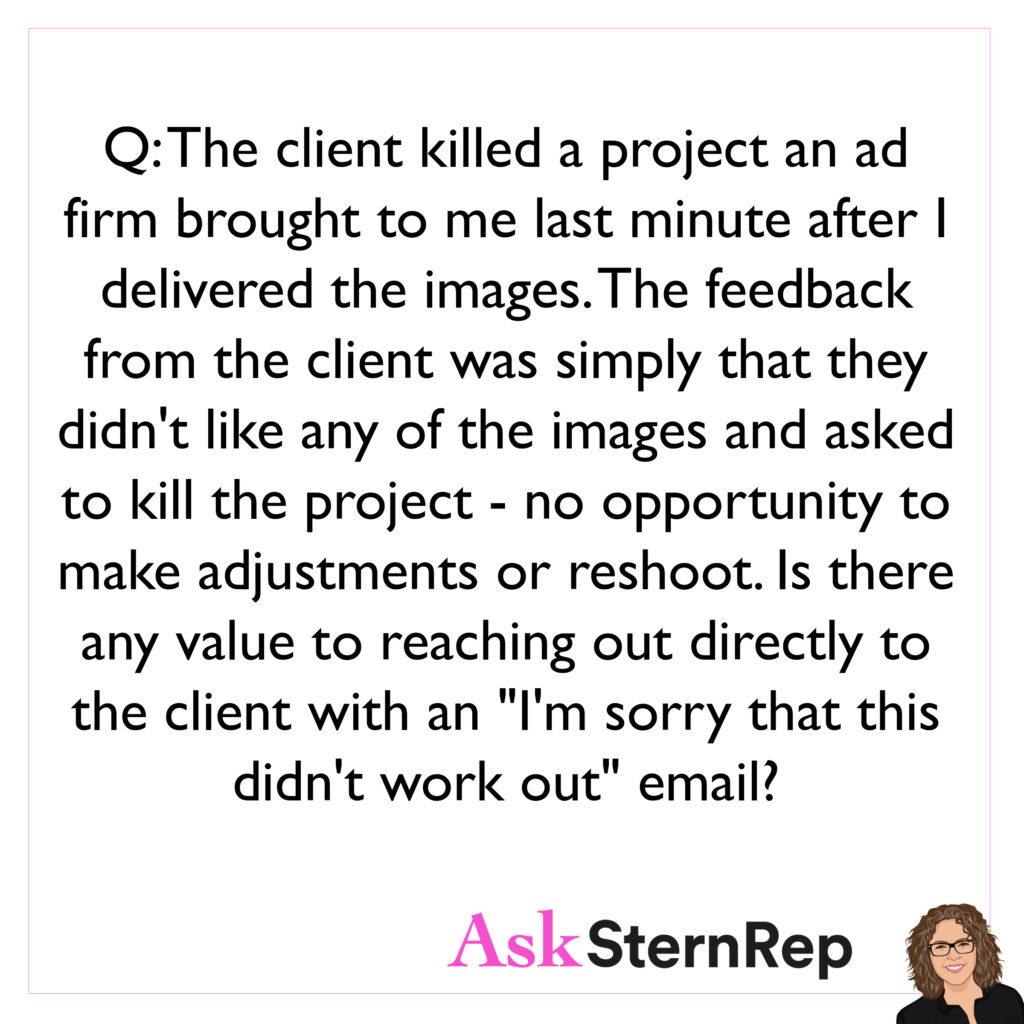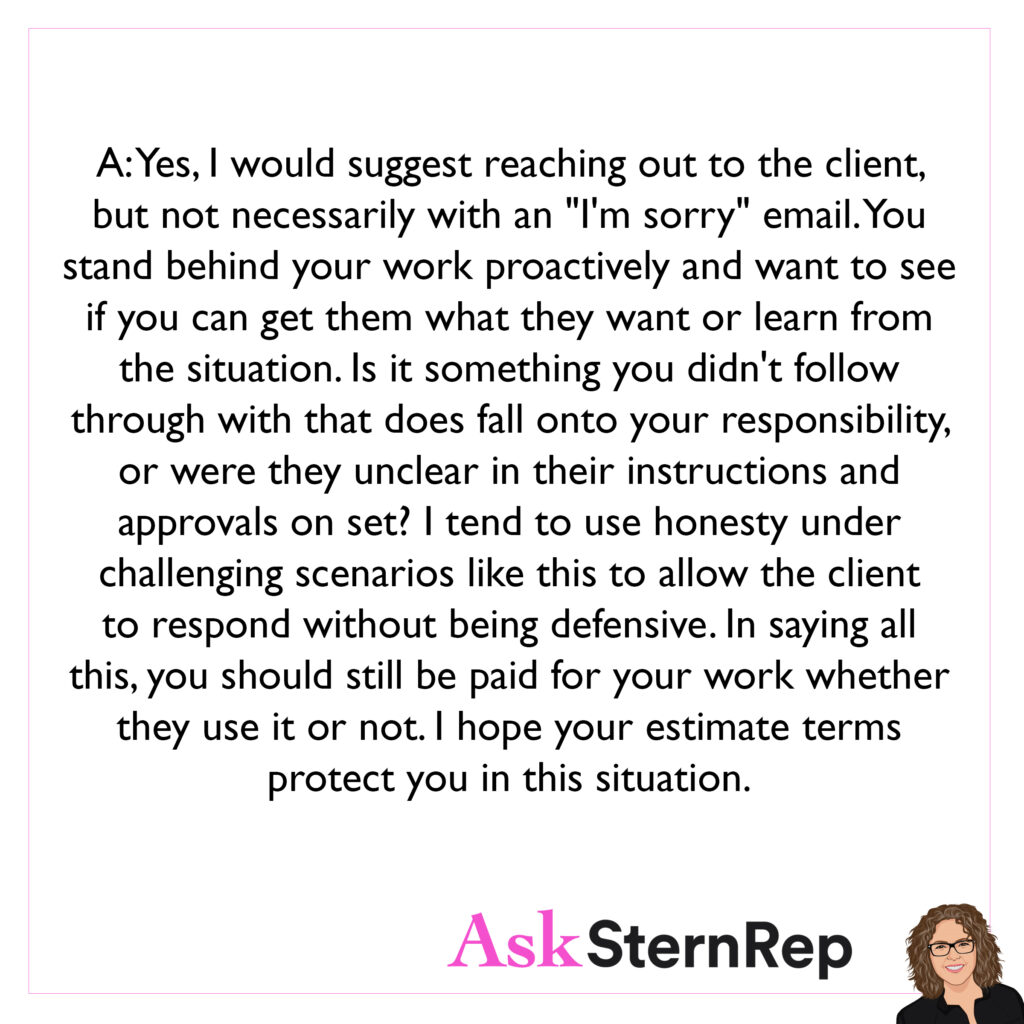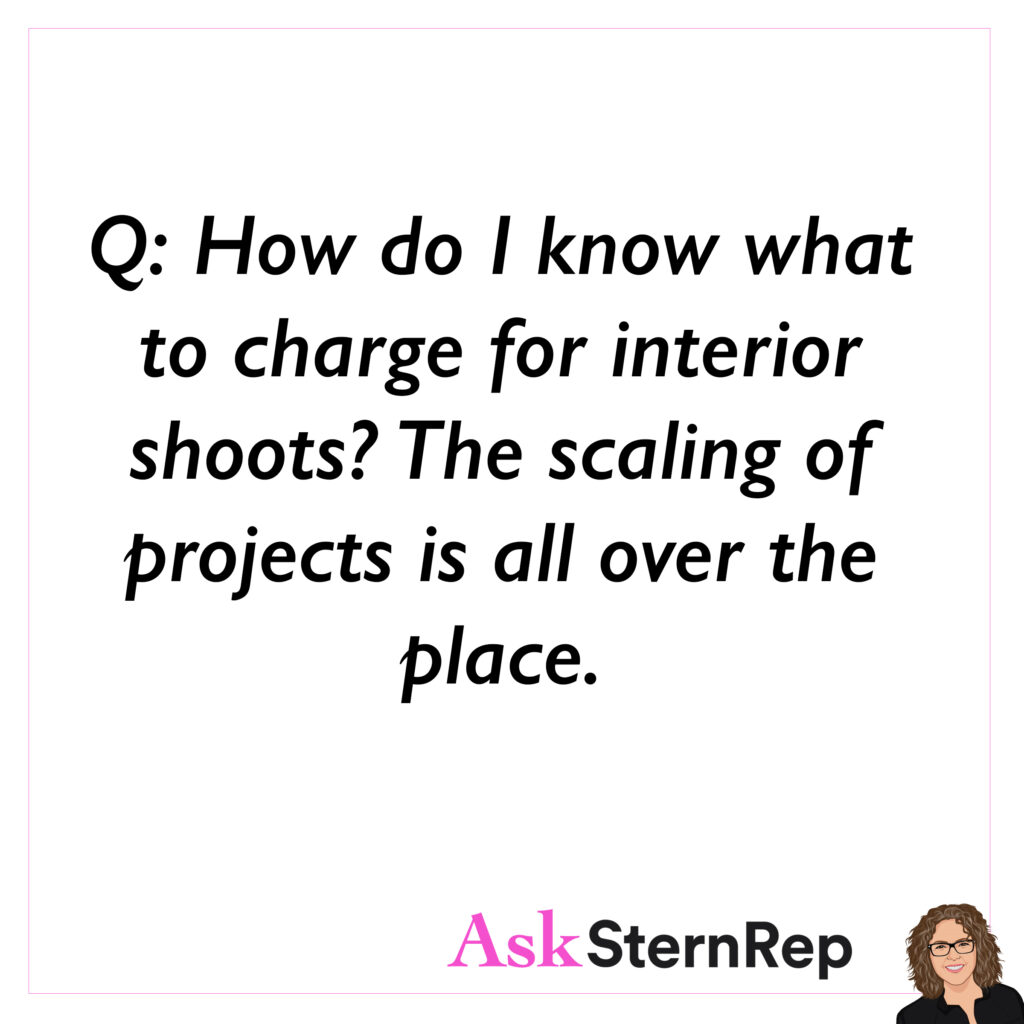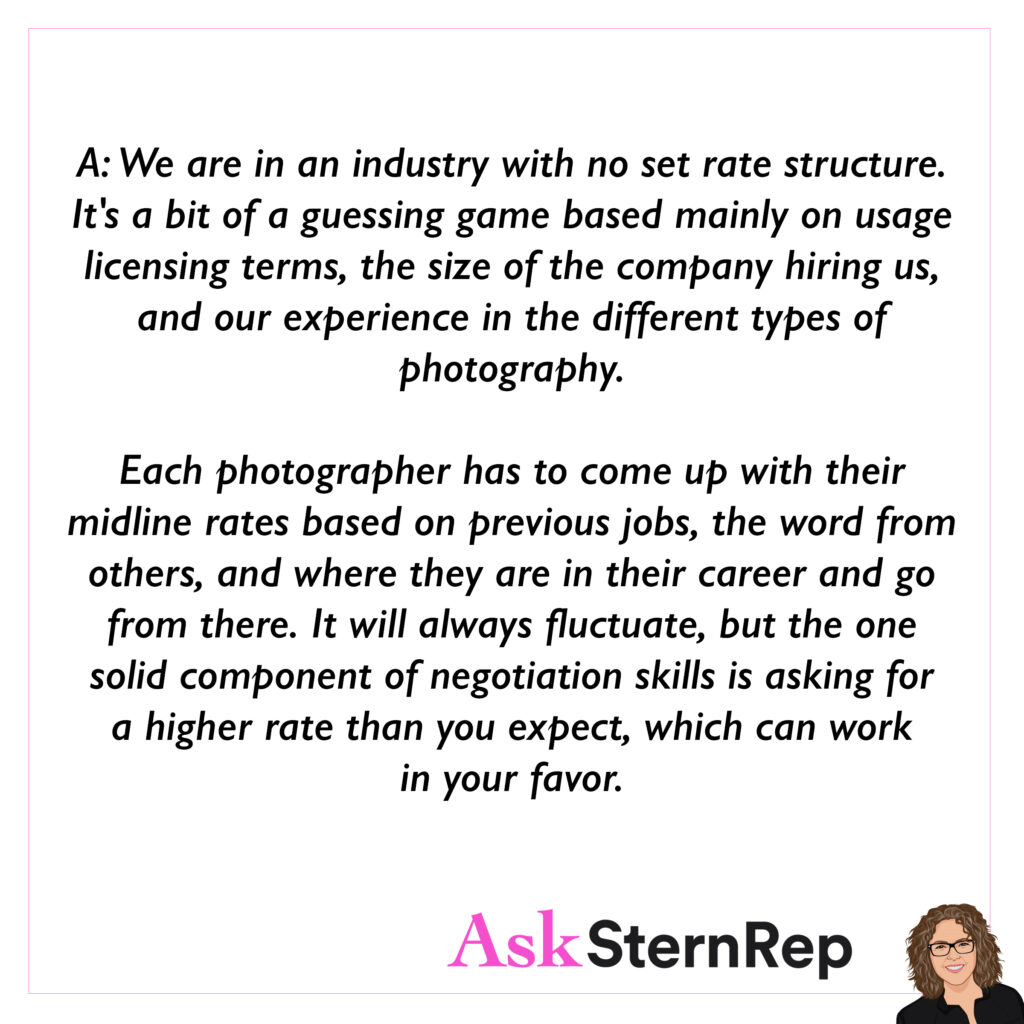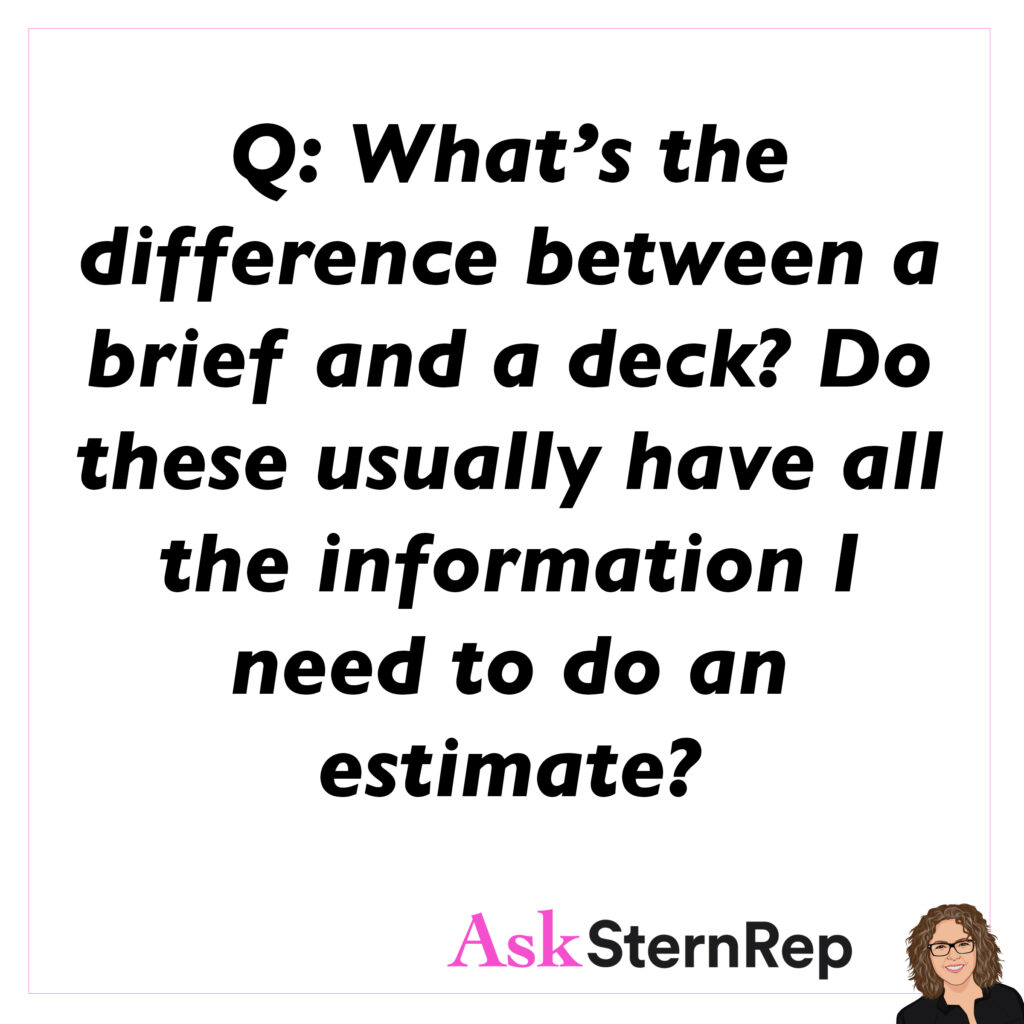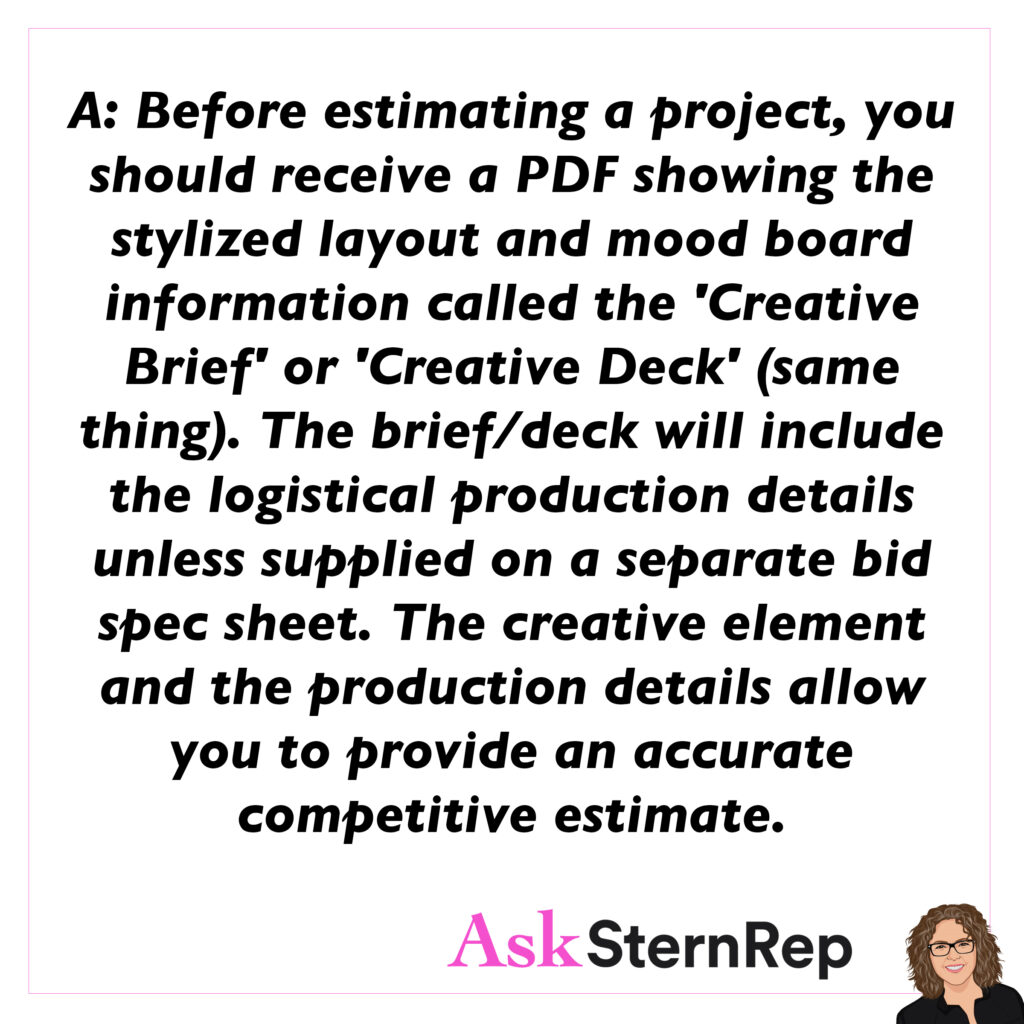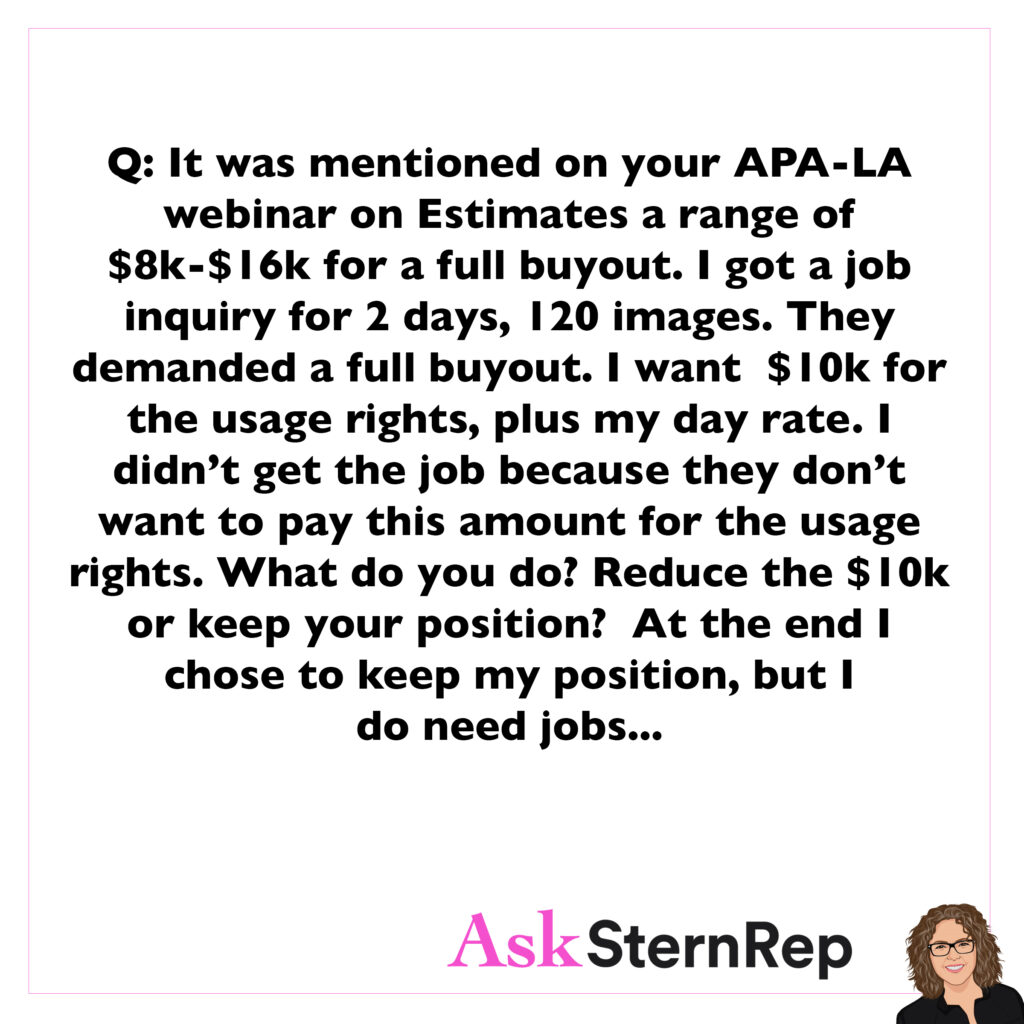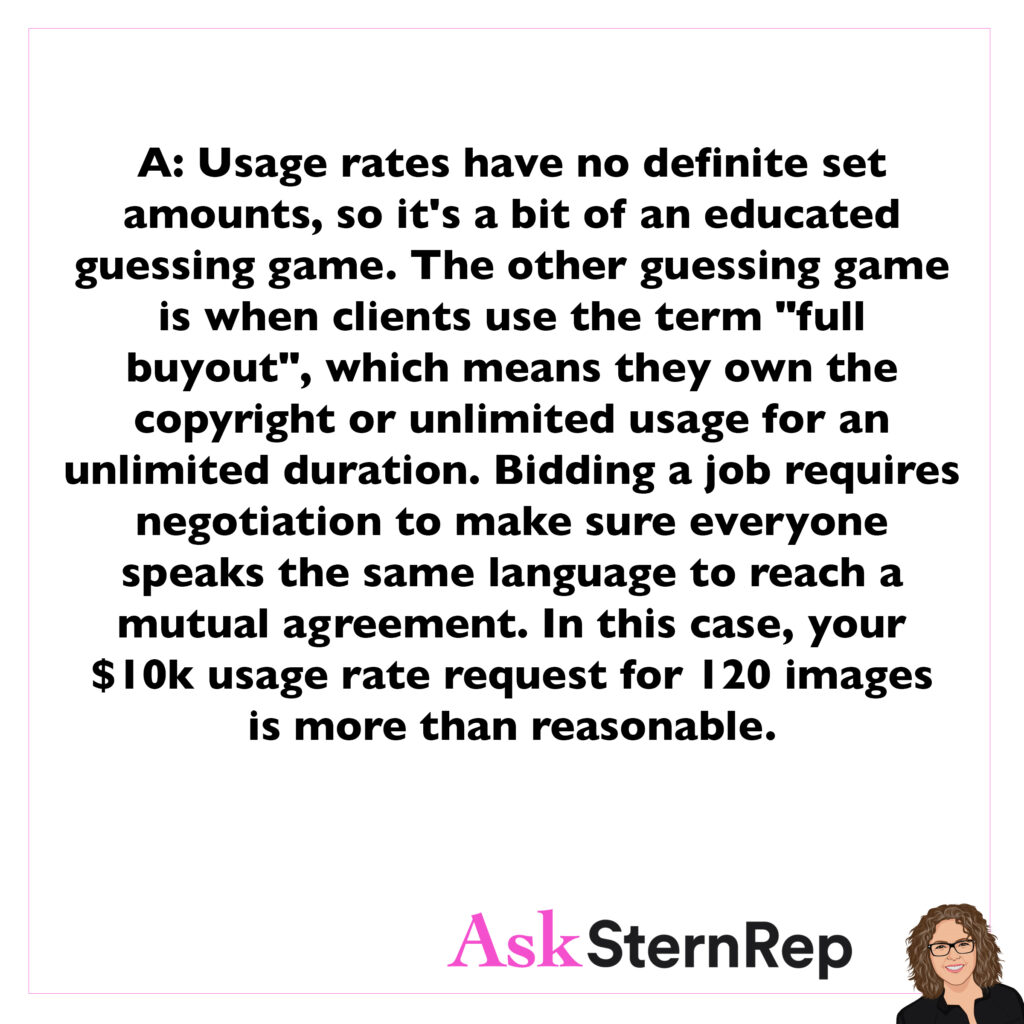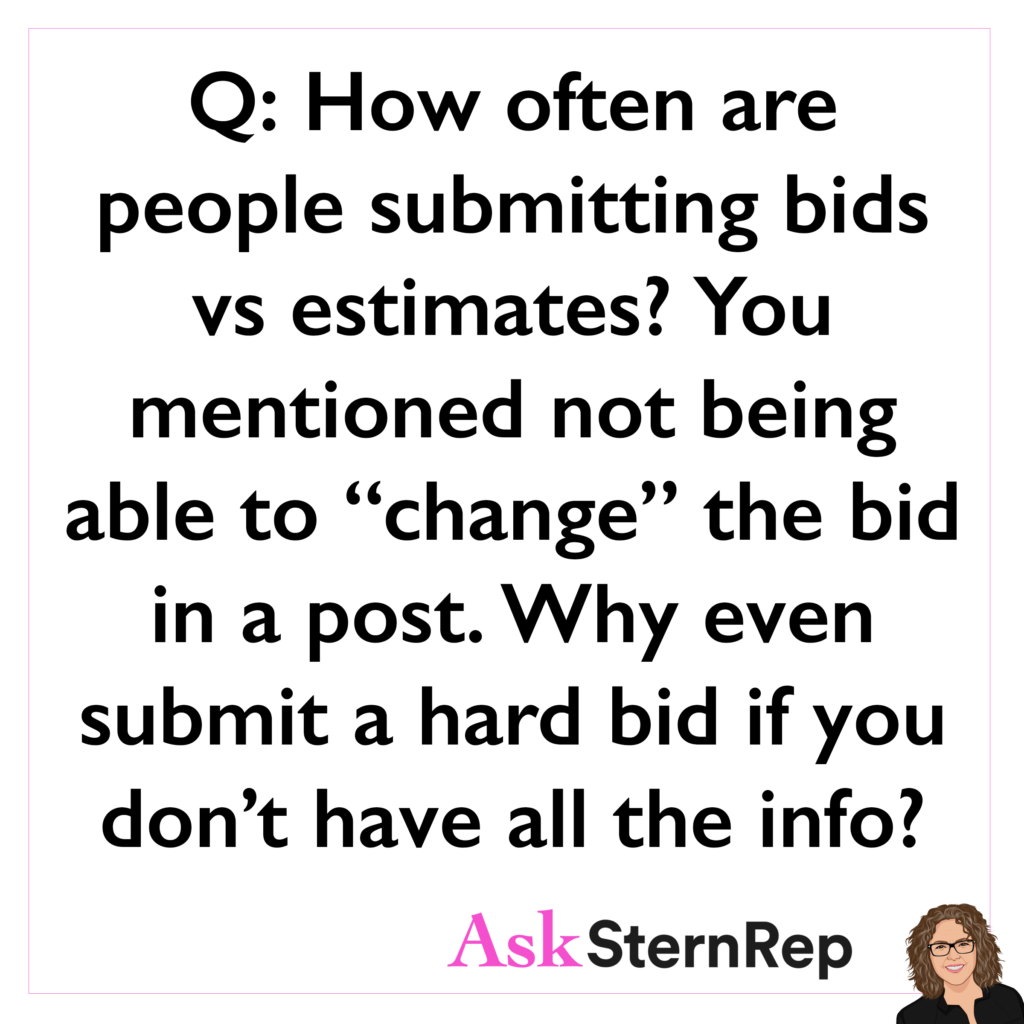
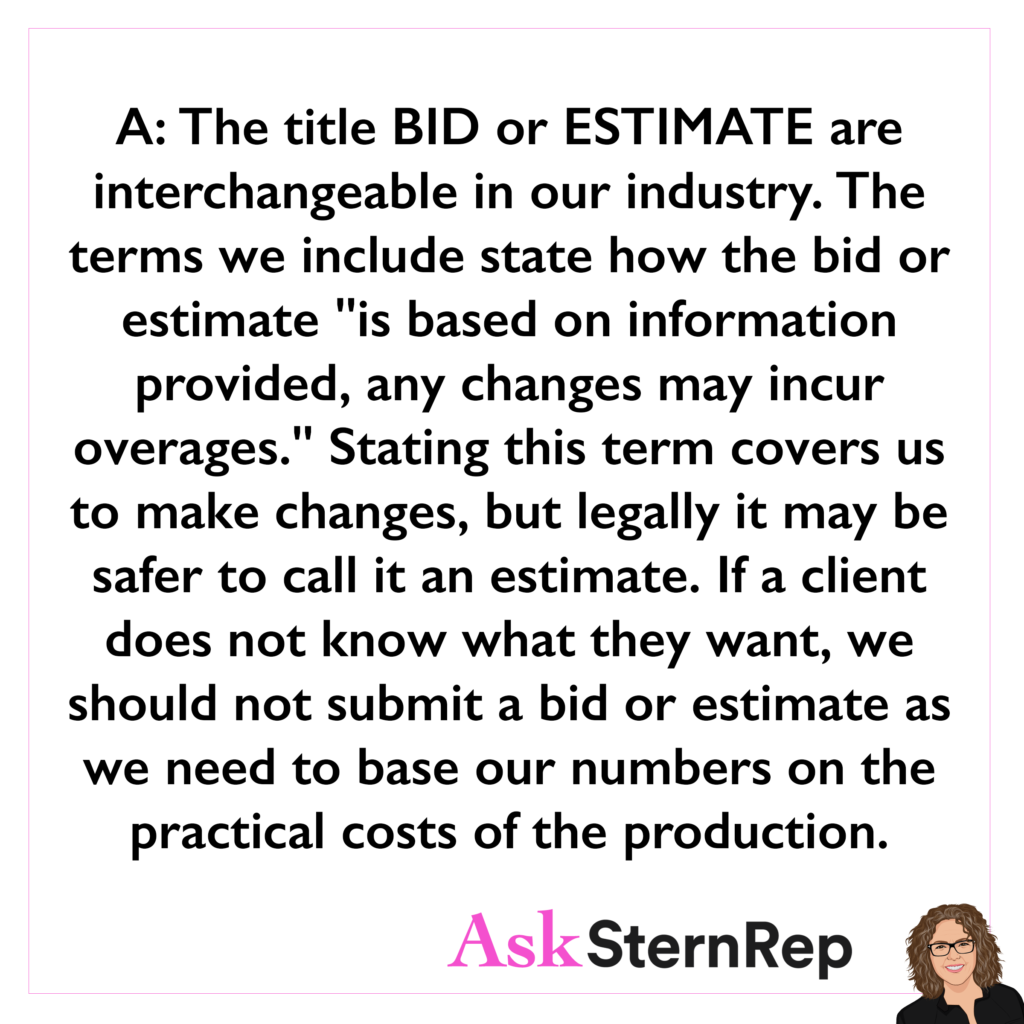
Q:
How often are people submitting bids vs estimates? You mentioned not being able to “change” the bid in a post. Why even submit a hard bid if you don’t have all the info?
A:
The title BID or ESTIMATE are interchangeable in our industry. The terms we include state how the bid or estimate “is based on information provided, any changes may incur overages.” Stating this term covers us to make changes, but legally it may be safer to call it an estimate. If a client does not know what they want, we should not submit a bid or estimate as we need to base our numbers on the practical costs of the production.

